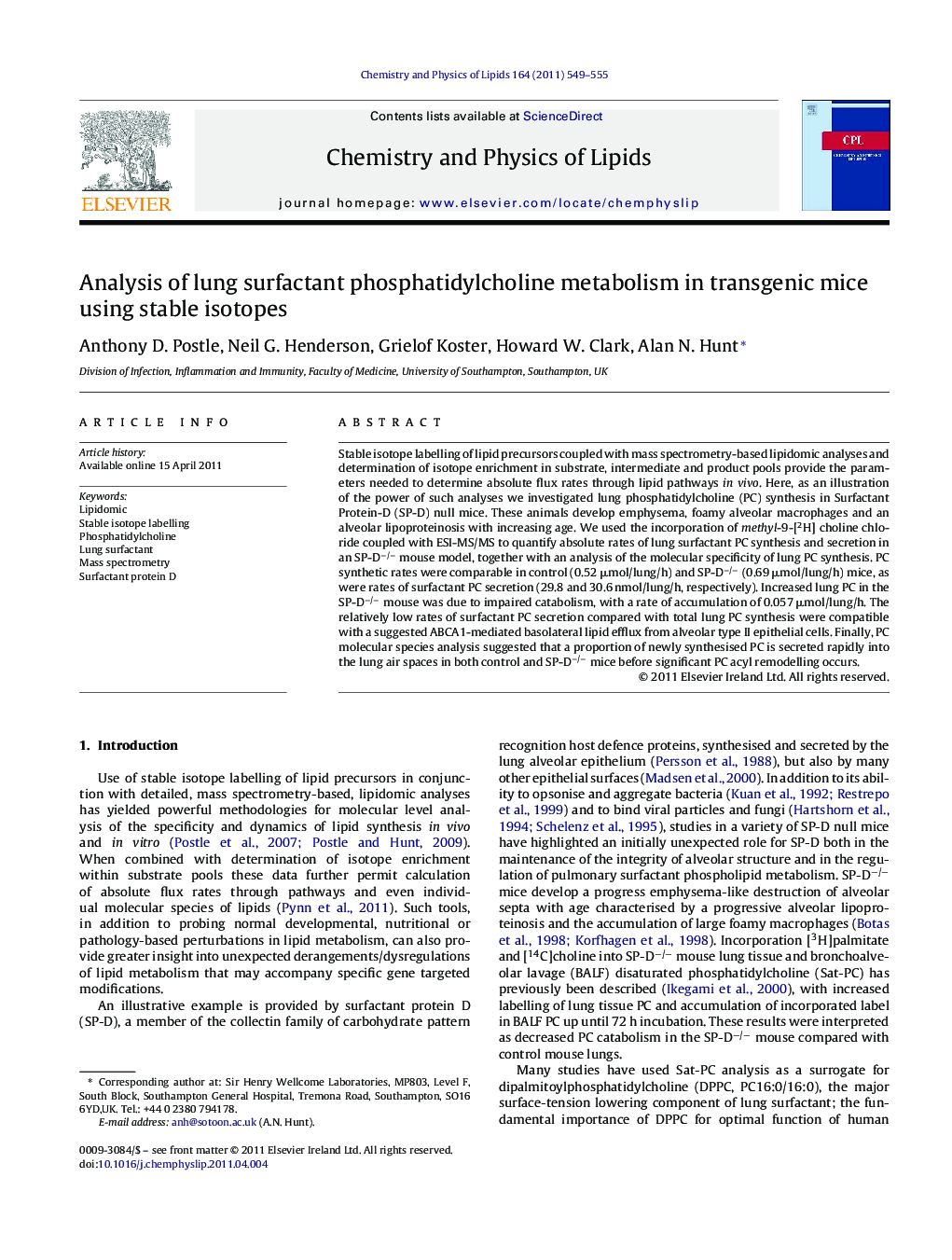| کد مقاله | کد نشریه | سال انتشار | مقاله انگلیسی | نسخه تمام متن |
|---|---|---|---|---|
| 1253378 | 1496318 | 2011 | 7 صفحه PDF | دانلود رایگان |

Stable isotope labelling of lipid precursors coupled with mass spectrometry-based lipidomic analyses and determination of isotope enrichment in substrate, intermediate and product pools provide the parameters needed to determine absolute flux rates through lipid pathways in vivo. Here, as an illustration of the power of such analyses we investigated lung phosphatidylcholine (PC) synthesis in Surfactant Protein-D (SP-D) null mice. These animals develop emphysema, foamy alveolar macrophages and an alveolar lipoproteinosis with increasing age. We used the incorporation of methyl-9-[2H] choline chloride coupled with ESI-MS/MS to quantify absolute rates of lung surfactant PC synthesis and secretion in an SP-D−/− mouse model, together with an analysis of the molecular specificity of lung PC synthesis. PC synthetic rates were comparable in control (0.52 μmol/lung/h) and SP-D−/− (0.69 μmol/lung/h) mice, as were rates of surfactant PC secretion (29.8 and 30.6 nmol/lung/h, respectively). Increased lung PC in the SP-D−/− mouse was due to impaired catabolism, with a rate of accumulation of 0.057 μmol/lung/h. The relatively low rates of surfactant PC secretion compared with total lung PC synthesis were compatible with a suggested ABCA1-mediated basolateral lipid efflux from alveolar type II epithelial cells. Finally, PC molecular species analysis suggested that a proportion of newly synthesised PC is secreted rapidly into the lung air spaces in both control and SP-D−/− mice before significant PC acyl remodelling occurs.
PC synthesis, alveolar secretion, turnover via macrophage (x) or type II cell (29.8 − x) and extrapulmonary transport must balance at equilibrium. Since PC synthesis is >10× alveolar turnover (520 nmol/lung/h vs. 29.8 nmol/lung/h), export of excess PC is essential. Observed PC saturation may result in part from selective export of unsaturated PC. Implicit in this model is a recognition that lung is a significant extra-hepatic source of circulating, PUFA-enriched PC.Figure optionsDownload as PowerPoint slideHighlights
► We investigate lung PC accumulation in SP-D null mice with a stable isotope label.
► Lipidomic analyses can show absolute rates of PC synthesis and secretion.
► PC accumulation in SP-D null lungs is due to impaired lipid catabolism.
► Excess lung PC synthesis is consistent with ABCA1-mediated basolateral lipid efflux.
► A proportion of newly synthesised PC is rapidly secreted without remodelling.
Journal: Chemistry and Physics of Lipids - Volume 164, Issue 6, September 2011, Pages 549–555